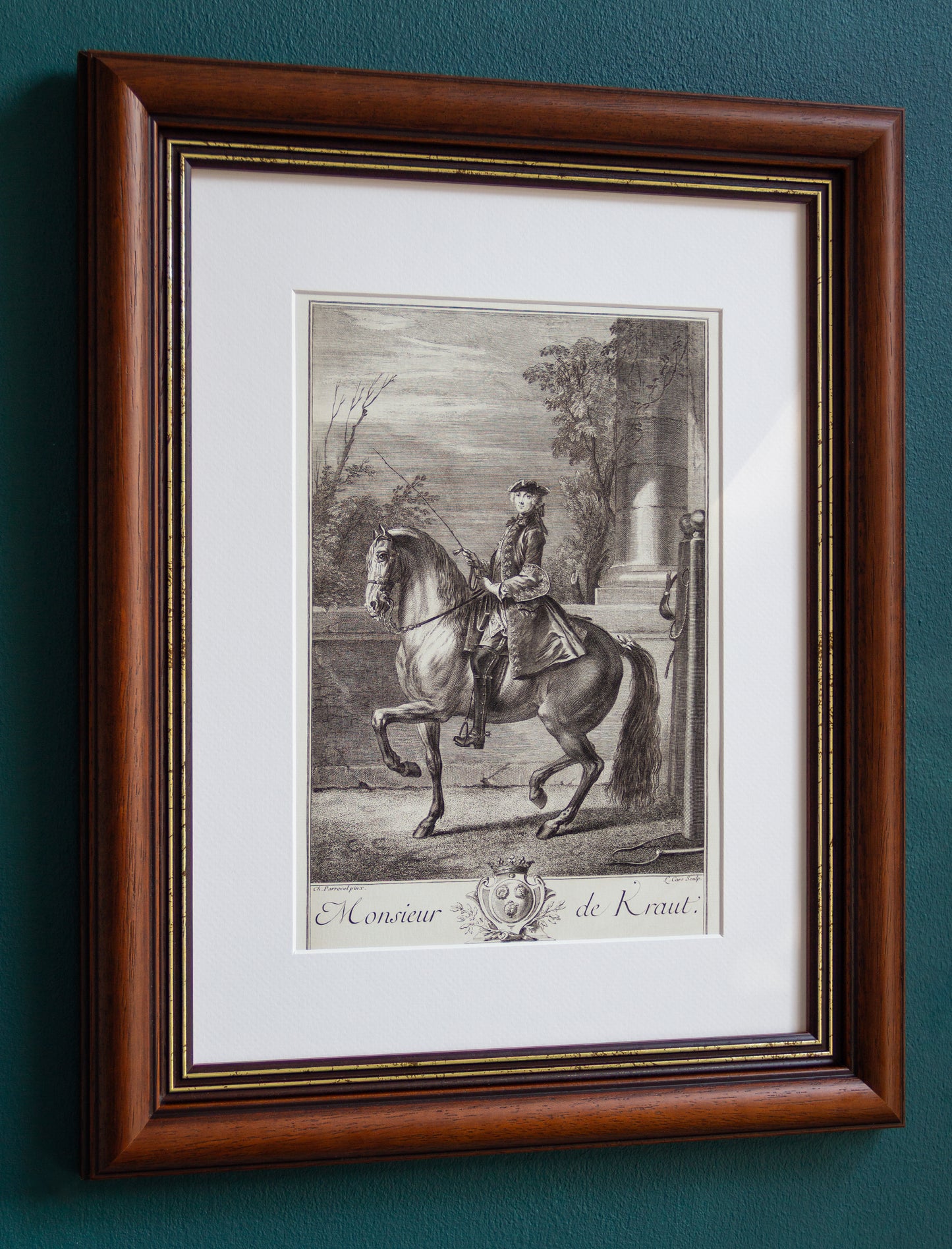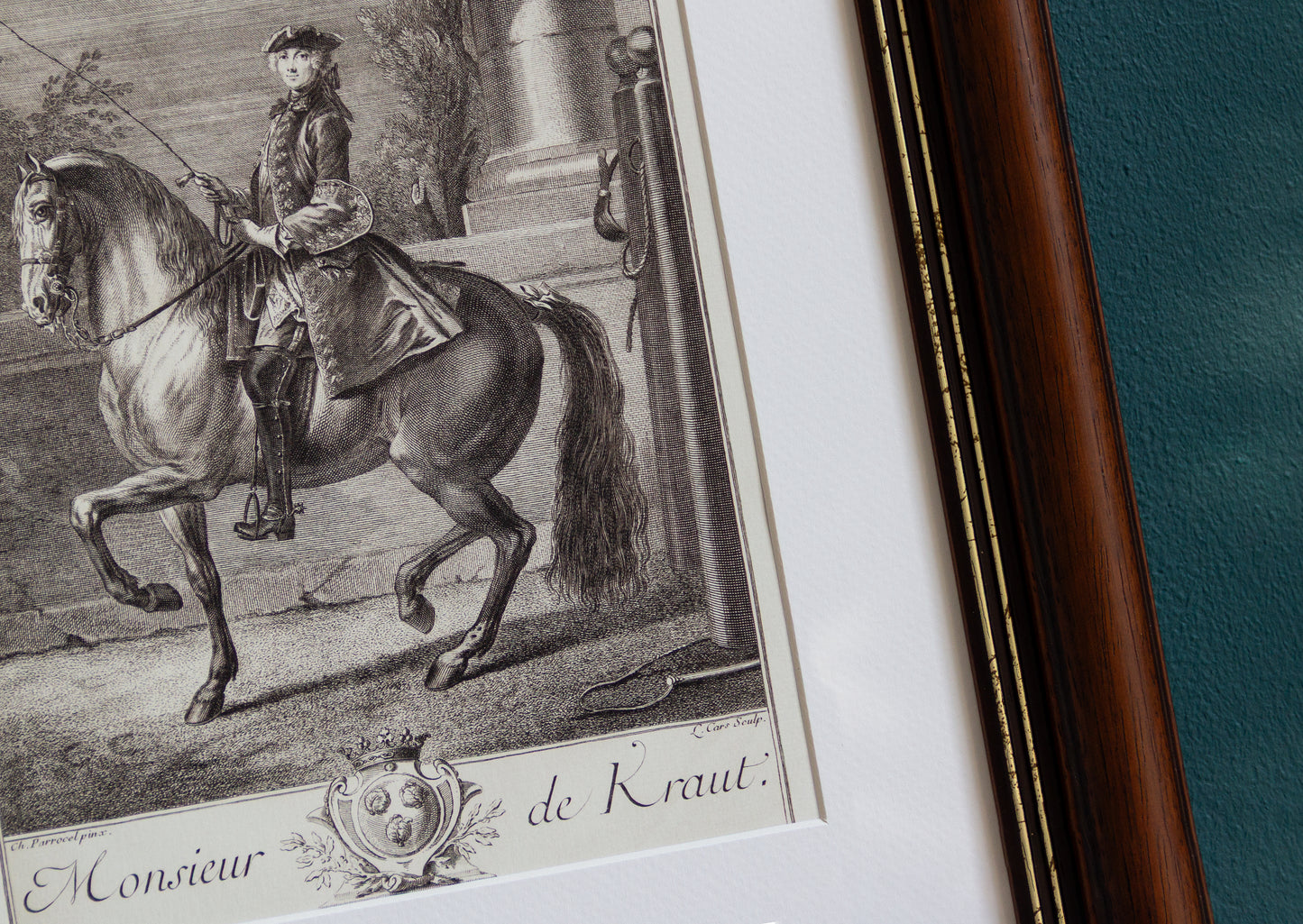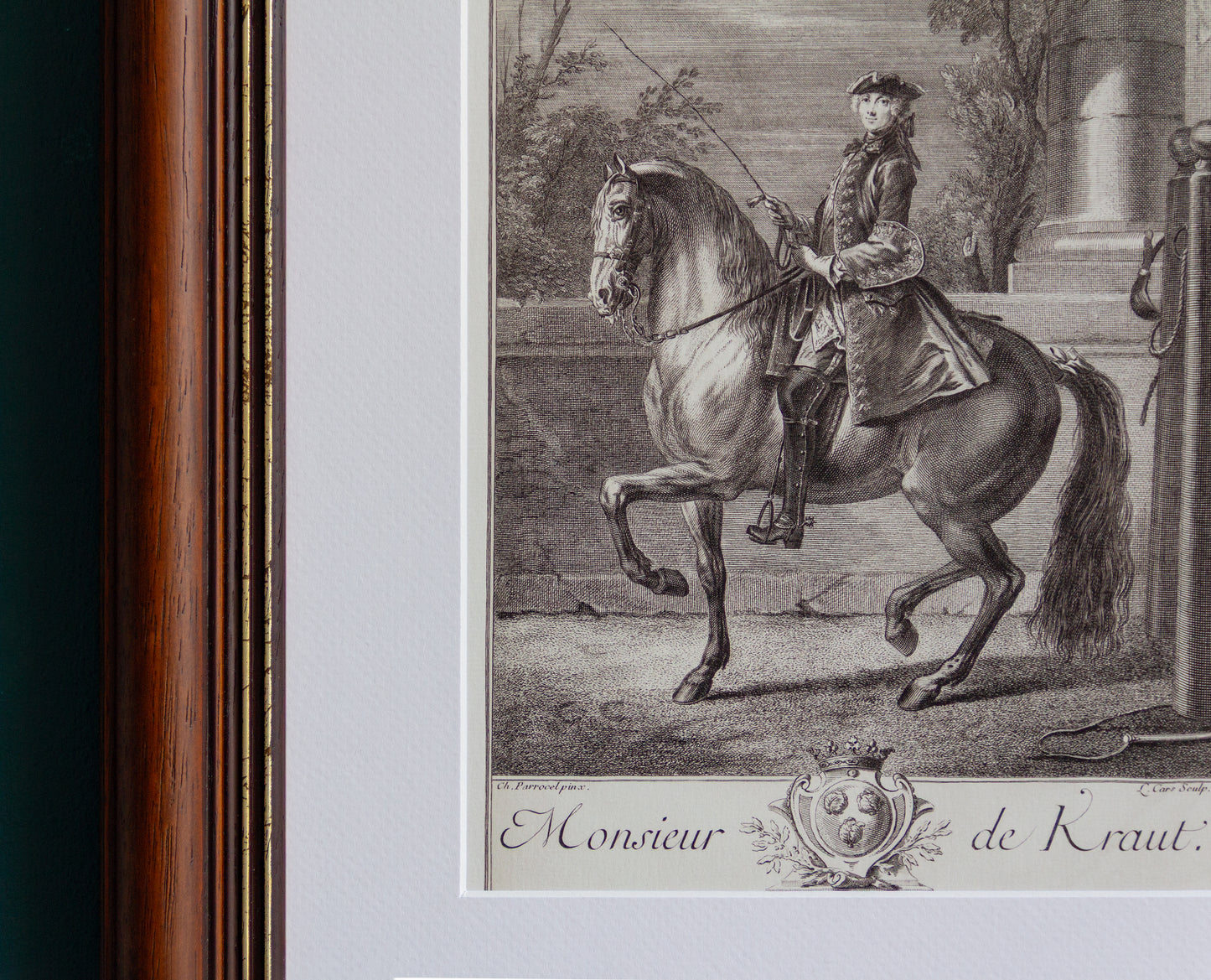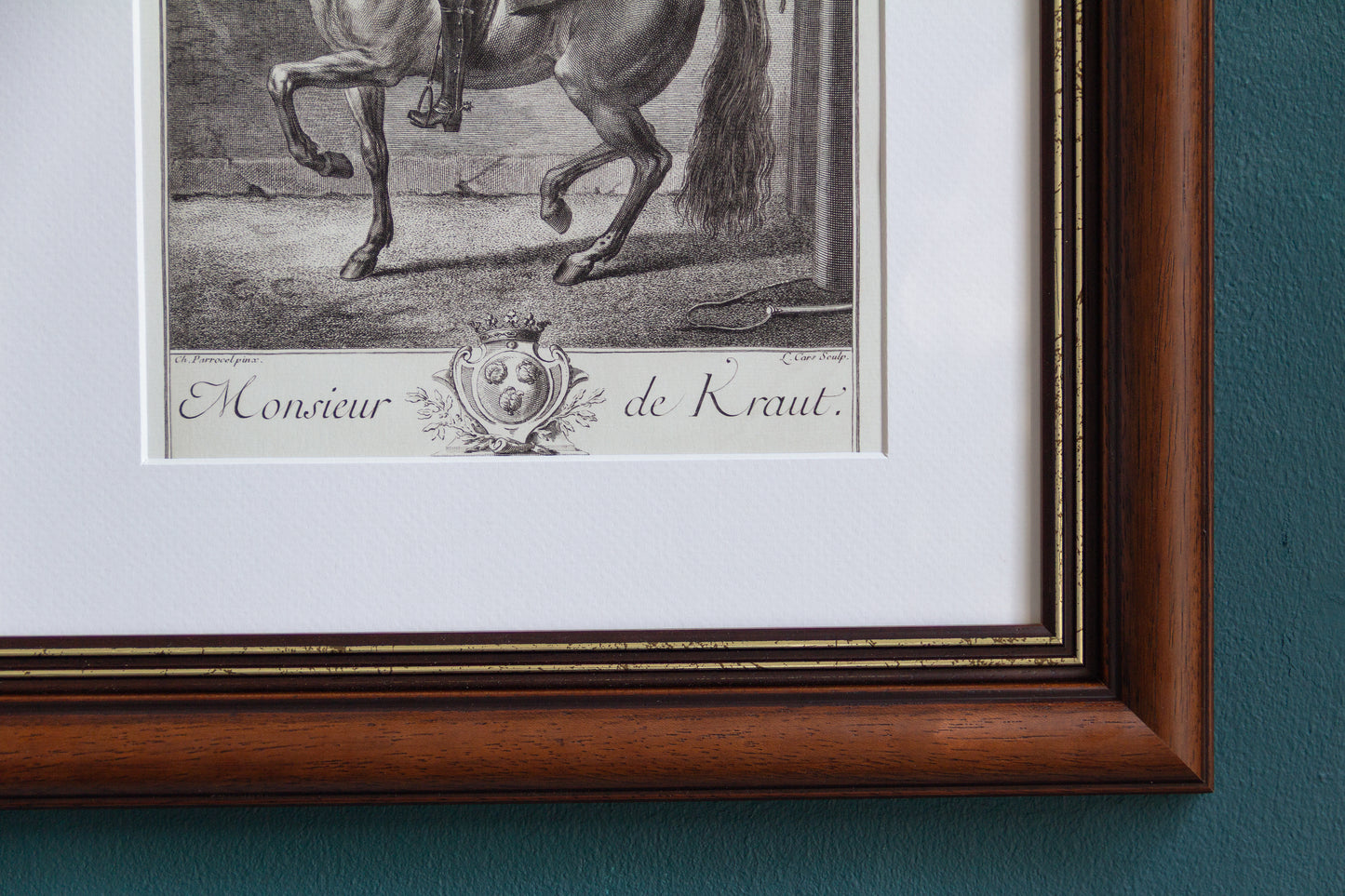De La Guérinière Prints | The Piaffe
De La Guérinière Prints | The Piaffe
The listed price is for the unframed fine art print only. Dimensions reflect the full size of the print, including any borders. The borders may appear larger or smaller than shown in product images, depending on the print size you select.
Couldn't load pickup availability
Print Quality & Materials
Print Quality & Materials
Expertly printed on luxurious 200gsm fine art paper with an elegant smooth finish, each piece is produced using a museum-grade giclée process. We use only the highest quality UV- or pigment-based inks, ensuring exceptional color depth and archival longevity: creating resistance to fading for over a century under suitable conditions.
Choosing the Right Size
Choosing the Right Size
We offer our prints in two size formats: inches and centimeters. If you’re in a region where inches are the framing standard (such as the US), we recommend selecting the inch-based sizes. For countries using the metric system, the centimeter variants are the best choice.
Our prints are designed to fit standard frame sizes, including those with or without a passe-partout (mat). For the most refined presentation, we recommend using a passe-partout, as it enhances the artwork’s visual impact.
Please note that for the common 20 x 29 cm passe-partout window, our A4 print size (21 x 29.7 cm) fits optimally.
For a 29 x 39 cm window, our 30 x 40 cm prints are the best choice.
Please note that some borders might be visible, based on the artwork. We design our products to accommodate to modern frames, but this is sometimes unavoidable based on the original dimensions of the artwork.
Regarded as the crowning jewel of classical dressage, the piaffe continues to embody the pinnacle of harmony and collection between horse and rider. This engraving remains the most iconic historical depiction of the piaffe, featuring the well-known Monsieur de Kraut. To many, this print captures the ideal form of a piaffe: deeply collected, with great lightness, and a completely vertical foreleg.
In the 18th century, François Robichon de La Guérinière held this movement in the highest esteem. Not merely for its technical difficulty, but for the nobility and grace it lent the horse during public performances and courtly displays. This print is more than just a historical engraving. It continues to inspire generations and is a celebration of art, legacy, and the timeless beauty of the piaffe.
More about the movement
More about the movement
Unlike the modern interpretation, de La Guérinière described the piaffe as a passage on the spot, while the passage itself was considered a moving piaffe. Indeed, the passage described a movement that went forward just 32 centimeters (12.5 inches) with every step, resulting in a deeply collected, rhythmically cadenced motion. The level of collection displayed in both passage and piaffe allowed for pronounced flexion of the hind limbs and a distinct elevation of the forehand. Indeed, this produced a movement of exceptional beauty and refinement.
De La Guérinière notes that the piaffe held particular favor among Spanish riding masters, who admired its brilliance and difficulty. Horses that executed the movement with extraordinary grace were called Piaffadores, a title of high regard. Spanish and Neapolitan breeds, he adds, possessed a natural aptitude for this spectacular gait, something that we can still glimpse today in the PRE and Lusitano breeds.
More about the rider
More about the rider
These ideals are exquisitely illustrated in this engraving by Charles Parrocel, featuring Monsieur de Kraut in perfect form. The image is a testament to both equestrian mastery and artistic finesse - a snapshot of the ideal piaffe as envisioned by the classical school.
The identity of Monsieur de Kraut remains somewhat elusive. Though the name became widely recognized through its appearance in L’École de Cavalerie, historical records provide only a tentative match: a Jean Étienne de Kraut, residing in Paris between 1690 and 1758. Whether this is the same individual remains uncertain.
Interestingly, not all editions of de La Guérinière’s work included these elaborate engravings. Simpler versions were often published under alternate titles such as Éléments de Cavalerie or Manuel de Cavalerie, without the finely attributed plates. It is possible that these detailed illustrations, including this print, were perhaps underwritten by aristocratic patrons drawn to the prestige of appearing within such a seminal equestrian work.





Unlock exclusive access to upcoming collections
Be among the select few to experience our newest collection before anyone else. You can sign up to our email list to receive exclusive updates and the chance to secure your pieces early.





